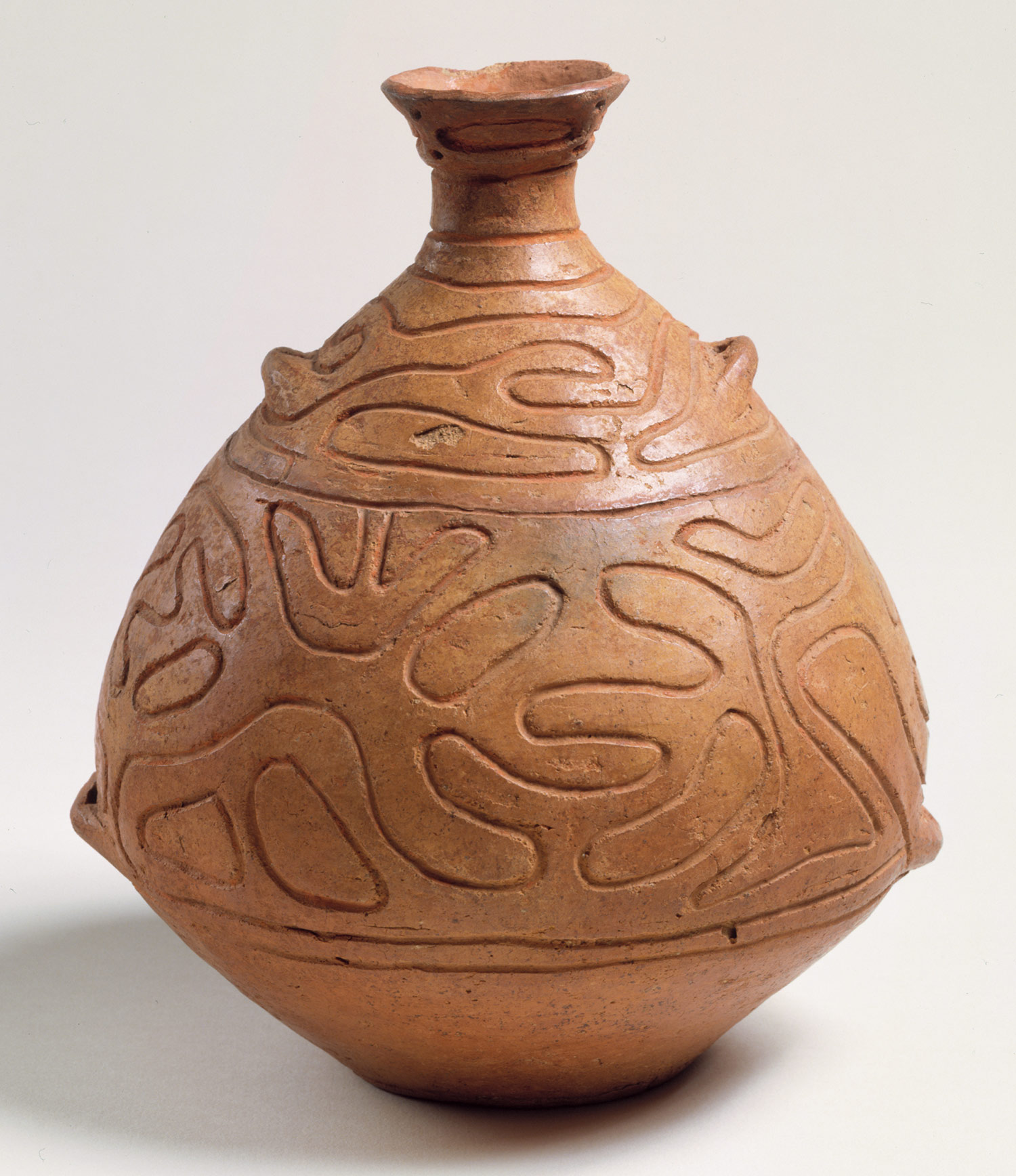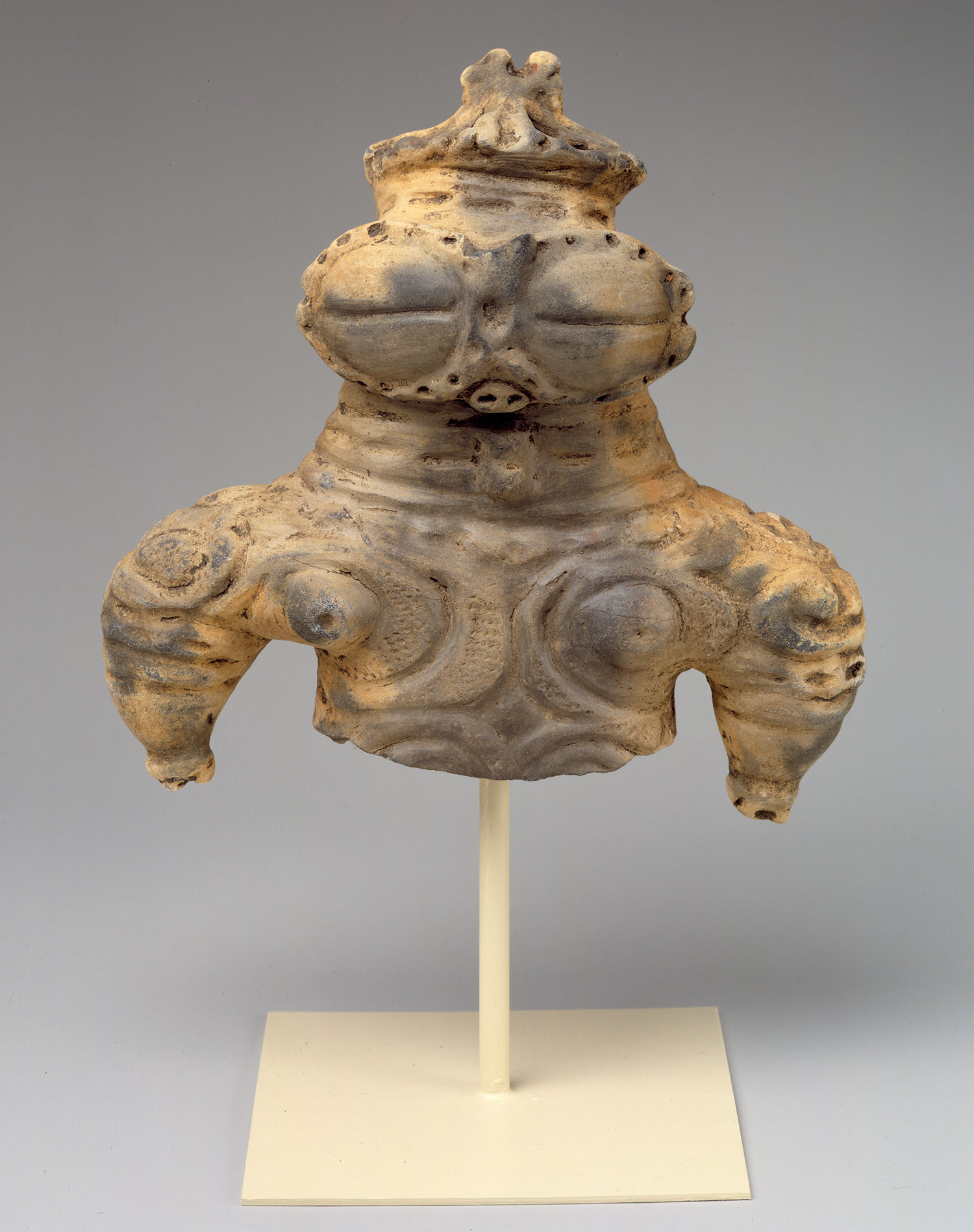Jomon Period (ca. 11,000- ca. 300 B.C.)

Bottle, Late Jomon period (ca. 1500–1000 B.C.)
Jomon Period - the term 'Jomon' means "cord-patterned" in Japanese, which refers to the markings made on clay vessels and figures by using sticks with cords wrapped around them. The Jomon people created the first known pottery vessels in the world. Their pots were made by hand, without the aid of a wheel. The clay they used was mostly composed of mica, lead, fibers and crushed shells. The potter would build up the vessel from the bottom with coil upon coil of soft clay.
Dogu (pronounced dough-goo)- these small clay figurines were made during the late Jomon period. The purpose of Dogu remains unclear, but it is theorized that these figures may of represented a Mother Goddess to whom Jomon people prayed to for health or safe childbirth. Dogu come entirely from the Jomon period and do not continue to the Yayoi period.

Bust of a female figurine, (Dogu) Final Jomon period (ca. 1000–300 B.C.)
Yayoi Period (ca. 500 B.C.-300 A.D)

Yayoi Storage Vessel, Japan, (400 BC-300 AD)
Yoyoi Period - In striking contrast to Jomon pottery, Yayoi vessels have a clean, functional shapes. The technical process of pottery making remained essentially the same, however, there are two technical differences. The surfaces of Yayoi vessels were smoothed, and clay slip was sometimes applied over the body to make it less porous. Yayoi craft specialists also made bronze ceremonial bells (Dotaku), mirrors, and weapons.

Bell (dotaku), late Yayoi period (ca. 4th century B.C.–3rd century A.D.)
Bronze
Dotaku - ceremonial bells smelted from thin bronze and richly decorated with hatched lines, spirals, and geometric patterns, although representations of nature and animals appear on some examples. Some historians believe that dotaku were used to pray for good harvests.
Stay tuned....
Kofun Period
Asaku and Nara Period
Heian Period

No comments:
Post a Comment